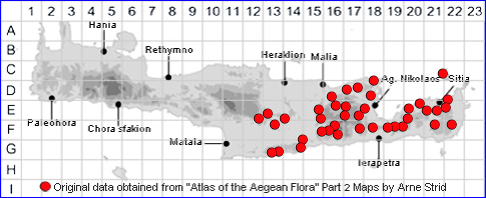
SPECIES DESCRIPTION
CAMPANULA SPATULATA subsp. FILICAULIS
Family and Genus:- See- CAMPANULACEAE/Sect. RANUNCULUS
Common Name:- None
Homotypic Synonyms:- Campanula sibthorpiana var. filicaulis, Campanula
spatulata var. filicaulis.
Meaning:- Campanula (L) Bell-like.
Spatulata (L) Spoon or spatula shaped.
Filicaulis (L) Having slender stems.
General description:- Thin-stemmed, short to medium, hairy perennial. Root
usually turnip-shaped (napiform). Stolons short.
Stems:-
1) 5-50 cm, filiform, flexuous, c 1-flowered.
Leaves:-
1) Margins dentate.
a) basal, inversely lanceolate, petiolate.
b) cauline, sessile or almost so, lanceolate, accuminate.
c) middle cauline, ovate or elliptical, more or less petiolate.
Flowers:-
1)1- to 5-flowered.
1) Corolla, 10 mm, infundibuliform, longer than the calyx-lobes, purple.
2) Calyx-teeth, 2-3 times as long as the ovary, lanceolate, tapering from the base
to the apex, weakly carinate, with 2-4 small glandular teeth.
3) Ovary, long narrowly obconical.
Fruit:-
1) Capsule, obconical, sulcate.
Key features:-
1) Stem, usually ± branched.
2) Corolla, (10-)20-30 mm campanulate or infundibuliform.
3) Root, thick, napiform.
4) Short non-flowering stolons usually present.
5) Pedicels, mostly more than 4 cm.
Habitat:- Dry open shrubby vegetation, rocky places and screes up to 1600m.
Distribution:- Endemic C. & E. Crete, where it is widespread and common.
.
Flowering time:- Mar-June.
Photo by:- Steve Lenton
